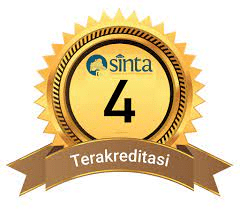KESADARAN (AWARENESS) DAN PEMAHAMAN (UNDERSTANDING) AKUNTAN PENDIDIK TERHADAP XBRL
Abstract
XBRL is a global standard that enables financial information to be analyzedquickly, cheaply, and easily and increases access by users. Since 2015 Indonesia Exchange (IDX) has encouraged companies in Indonesia to adopt XBRL for their financial report. XBRL format made by IDX called IDX Taxonomy 2014. The adoption of XBRL in company financial report finally has an impact to the accounting education. This is because reducing and eliminating the gap between accounting education and accounting practice must always be sought. The purpose of this study is to explore the awareness and understanding of accounting educators in Indonesiaabout XBRL.Accounting educators are the profession which have responsibility in accounting education development. There were 124 accounting educators as a sample from several universities in Indonesia. The questionnaires were used to obtain the data, which distributed via email and social media. The results show that most of accounting educators do not aware and understand about what XBRL is. However, they who have not know about XBRL yet, has a curiosity and want to learn more about XBRL.
Keywords
Full Text:
PDFReferences
American Accounting Association. (1986). Committee on the Future Structure, Content, and Scope of Accounting Education, ‘Future
Accounting Education: Preparing for the Expanding Profession.’ AAA.
Baldwin, A. A., Brown, C. E., & Trinkle, B. S. (2006). XBRL: An impacts framework and research challenge. Journal of Emerging Technologies in Accounting, 3(1), 97–116.
Bursa Efek Indonesia. (2015). XBRL. Retrieved February 24, 2019, from https://www.idx.co.id/perusahaan-tercatat/xbrl/
Chambers, R. J. (1966). Accounting, Evaluation and Economic Behavior. Prentice Hall.
Cohen, E. E. (2009). XBRL’s global ledger framework: Exploring the standardised missing link to ERP integration. International Journal of Disclosure and Governance, 6(3), 188–206.
David, J. (2016). The Non-Adoption of XBRL by Professional and Government Organisations in New Zealand and its Implications for Stakeholders. School of Accounting and Commercial Law Te Kura Kaute, Ture Tauhokohoko.
Debreceny, R., & Gray, G. L. (2001). The production and use of semantically rich accounting reports on the Internet: XML and XBRL. International Journal of Accounting Information Systems, 2(1), 47–74.
Gomaa, M. I., Markelevich, A., & Shaw, L. (2011). Introducing XBRL through a financial statement analysis project. Journal of Accounting Education, 29(2–3), 153–173.
Kernan, K. (2008). XBRL Around the World. Journal of Accountancy, 206(4), 62–66.
Lee, T. (1989). Education, Practice and Research in Accounting: Gaps, Closed Loops, Bridges and Magic Accounting. Accounting and Business Research, 19(75), 237–253.
Nel, G. F., & Steenkamp, L. P. (2011). An exploratory study of chartered accountants’ awareness and understanding of XBRL. Meditari Accountancy Research, 16(1), 79–93.
Article Metrics
Abstract has been read : 643 timesPDF file viewed/downloaded: 0 times
DOI: http://doi.org/10.25273/inventory.v3i1.4194
Refbacks
- There are currently no refbacks.
Copyright (c) 2019 Yusti Pujisari, Frasto Biyanto

This work is licensed under a Creative Commons Attribution-ShareAlike 4.0 International License.
Indexed by:
Supported by:
Editorial Office:
Universitas PGRI Madiun
Kampus 3 Lantai 2 Program Studi Akuntansi
Fakultas Ekonomi dan Bisnis
Jl. Auri no. 14-16 Madiun








